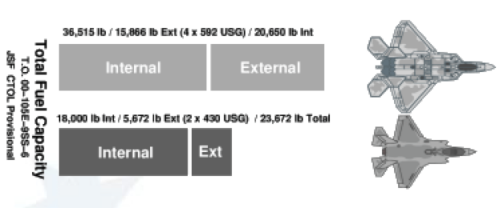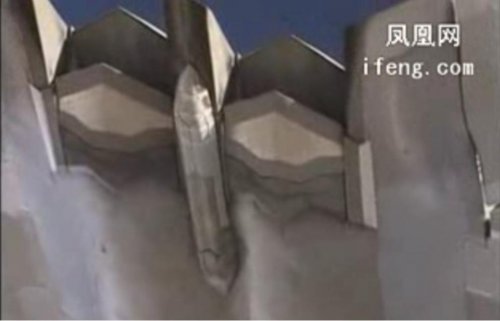This link
http://www.f-16.net/f-16_forum_viewtopic-t-11567.html
seams to give some good numbers for the F119 engines.
I would like to apply some common sence maths here to get the max pure
supercruise radius of the F-22. If anyone has better data and/or math
skills, please feel free to enlighten me.
So I accept the trust levels of the F119 at full milittary power to be
2x0.8 lb of fuel per pound of trust per hour SFC. That is 100% trust
without afterburner or 2x25,000 lb of trust. At that trust we expect
the F-22 to fly at max of Mach 1,82 at 40,000+ ft.
But supercruise speed probably means flying at Mach 1,5. That speed
needs about 18% less trust and the engines SFC is 18% from max dry.
So that's about 2x21,500 lb trust, at 2x0,664 SFC to fly at Mach 1,5
If the F-22 used 20% of it's fuel to take off, accelerate to Mach 1,5,
decelerate back after the mission and land, we are left with 14,400 lb
of fuel left to spend for supercruise.
0,664 pounds of fuel per pounds of trust per hour, at 2x21,500 lb of
trust from 14,400 lb of available fuel will allow the two Raptor
engines to run for roughly 30 minutes total.
Mach 1,5 at 40,000 ft translates in about 1,600 km/h. 30 min dash at
that speed will give us a range of 800 km. Add 100 more to get to Mach
1,5 from take of and 100 back needed to land and we have a max Mach
1,5 supercruise combat radius of 500km which is about 270nm.
May not sound like much but how good will the F-15C do in the same
circumstances? It has less internal fuel and twice the SCF to keep the same speed

I Know the YF-23 would have done a lot better but that's another story.
BTW, wasn't the original requirement for about 350nm supercruise radius?
P.S. Using the figure of 20,650 lb for internal fuel, I get a 44 min of supercruise for a combat radius of 687km or 370nm.

